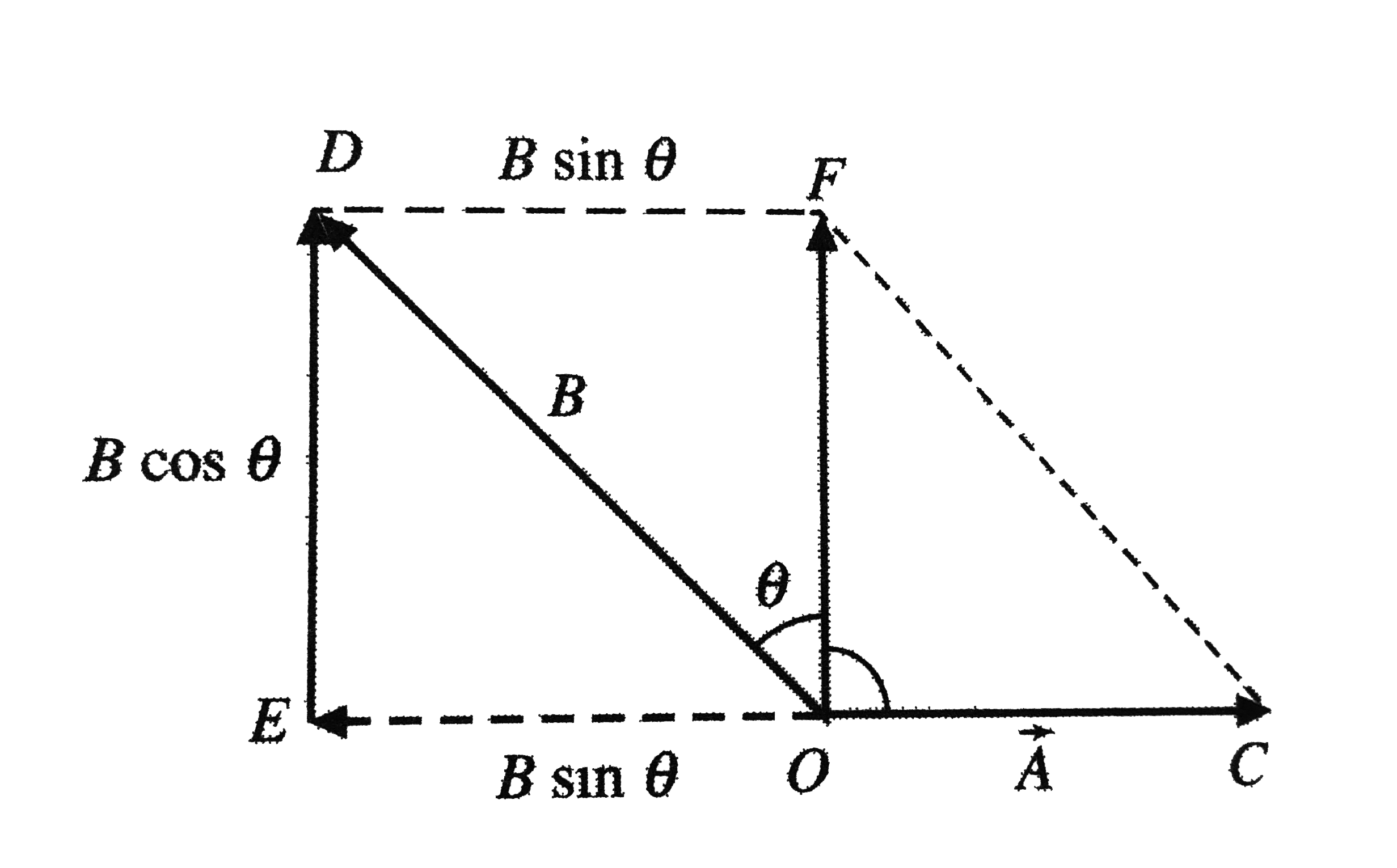If for two vector →A and →B, sum (→A+→B) is perpendicular to the difference (→A−→B). The ratio of their magnitude is
1
2
3
none of these
The correct Answer is:A
(→A+→B) is perpendicular to (→A−→B) Thus
(→A+→B).(→A−→B)=0
or A2+→B.→A−→A.→B−→B2=0
Bacause fo commutative property of dot product →A.→B=→B.→A
A2−V2=0 or A=B
Thus the ratio of magnitudes AB=1
Similar Questions
The resultant of two vectors →A and →b is perpendicular to the vector →A and its magnitude is equal to half the magnitude of vector →B. The angle between →A and →B is
View SolutionThe resultant of two vectors →A and →B is perpendicular to →A and equal to half of the magnitud of →B. Find angle between →B and →B?
View Solution
Knowledge Check
- Question 1 - Select One
The vector (→a.→b)→c−(→a.→c)→b is perpendicular to
A→bB→aC→cD→b×→c - Question 2 - Select One
For vectors →A and →B, (→A+→B).(→A×→B) will be :
AA2B2B(A+B)(AB)CzeroD√A2+B2+AB - Question 3 - Select One
The resultant of two vectors →A and →B is perpendicular to the vector →A and its magnitude is equal to half of the magnitude of the vector →B. Find out the angles between →A and →B.
 .A120B90C60D150
.A120B90C60D150
Let →a,→band→care vectors such that |→a|=3,∣∣→b∣∣=4and|→c|=5,and(→a+→b) is perpendicular to →c,(→b+→c) is perpendiculatr to →a and (→c+→a) is perpendicular to →b. Then find the value of ∣∣→a+→b+→c∣∣.
View SolutionTwo vectors →A and →B are such that →A+→B=→A−→B. Then
View SolutionVectors →Aand→B are mutually perpendicular . Component of →A+→B in the direction of →A−→B will be:
View SolutionFor the any two vecrtors →A and →B, if →A.→B=∣∣→A×→B∣∣, the magnitude of →C=→A+→B is equal to
View SolutionIf ∣∣→A+→B∣∣=∣∣→A−→B∣∣, then the angle between →Aand→B will be
View Solution

